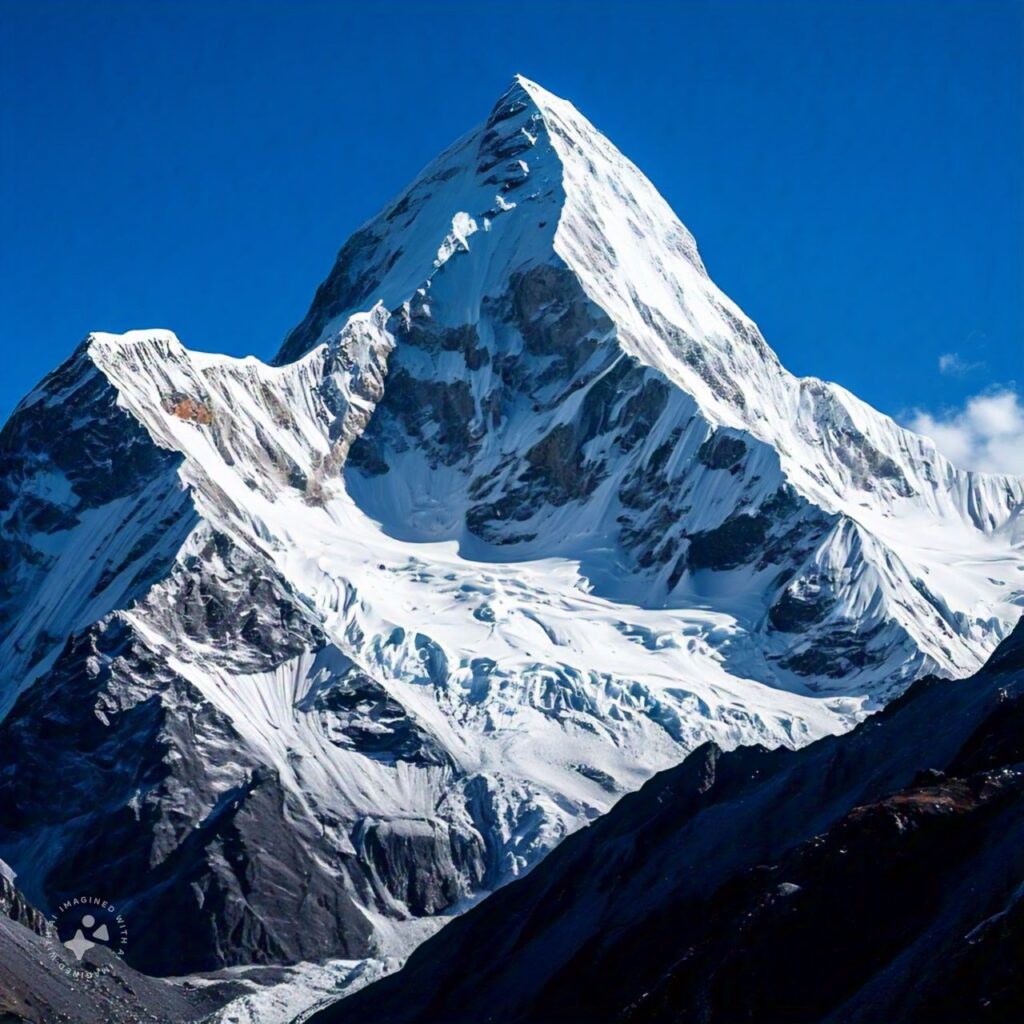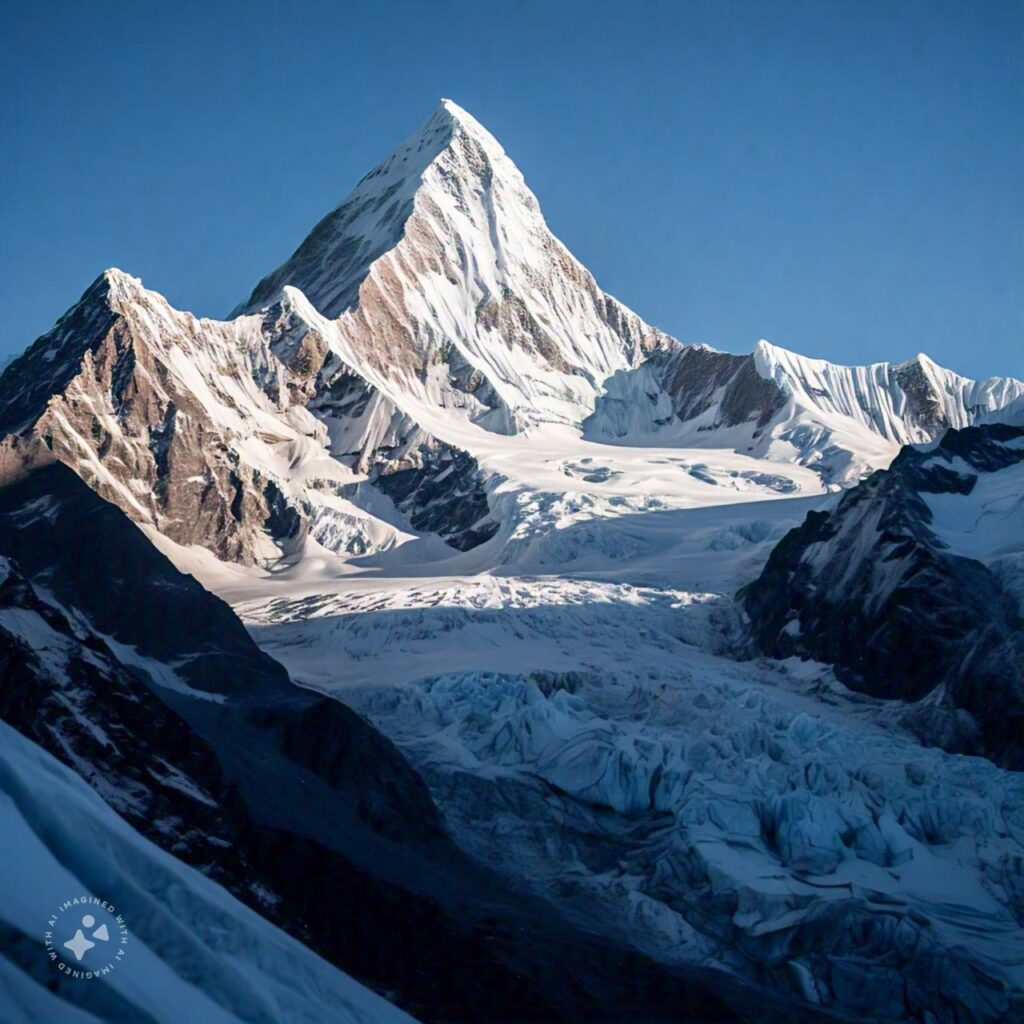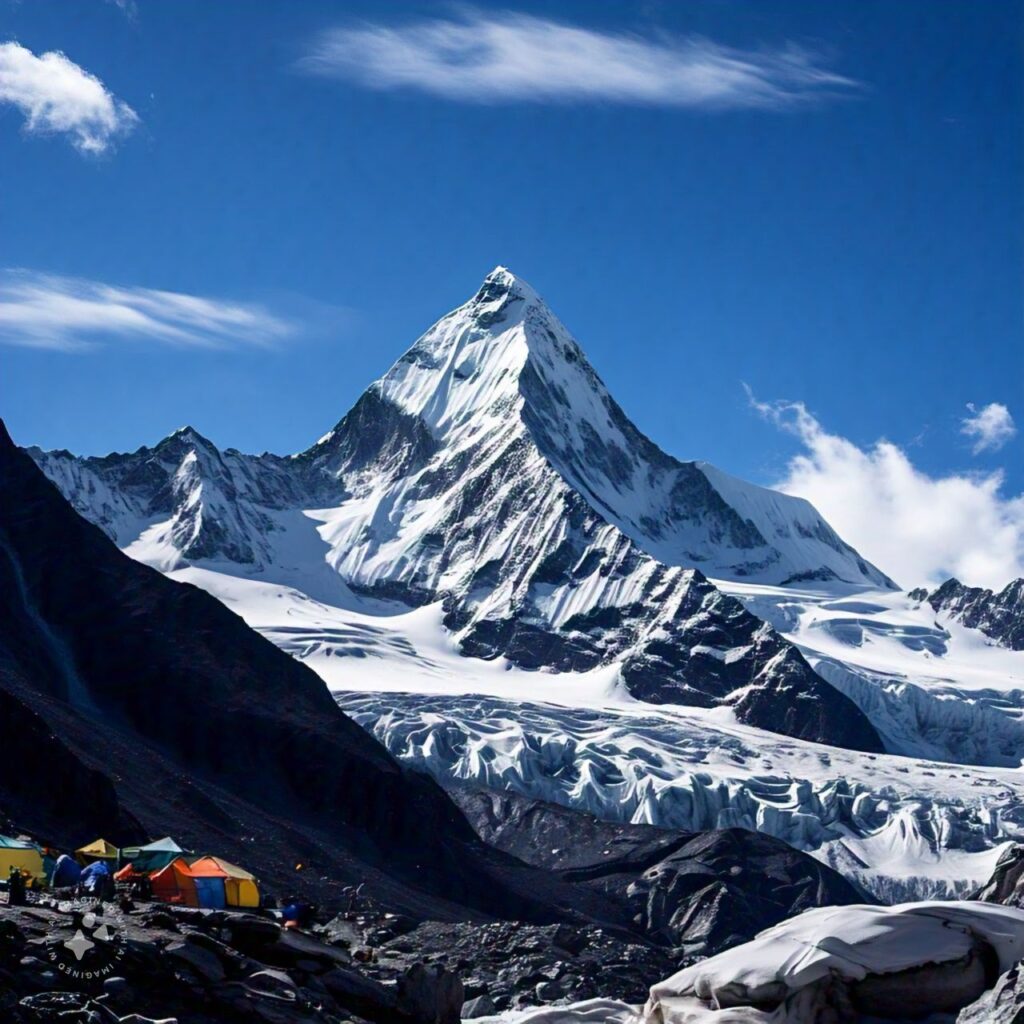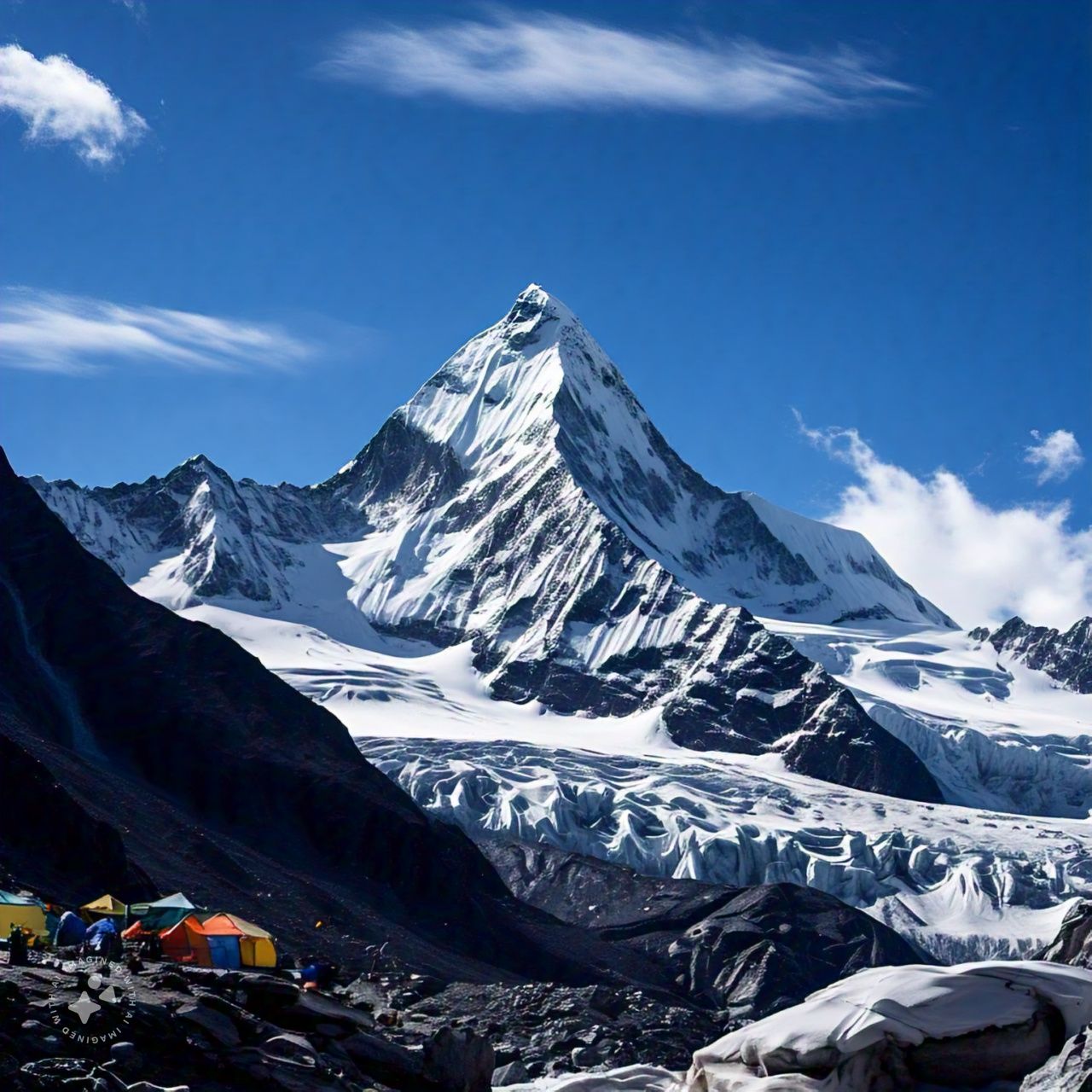Standing at an awe-inspiring 8,848.86 meters (29,031.7 feet) above sea level, Mount Everest is the tallest mountain on Earth. Known as “The Roof of the World,” it has captivated the imagination of adventurers, explorers, and mountaineers for centuries. This towering peak, located in the Himalayas on the border between Nepal and China (Tibet), represents not only the ultimate challenge for climbers but also a powerful symbol of human ambition, endurance, and the natural world’s awe-inspiring beauty.
In this article, we will explore the history, geography, cultural significance, and the challenges of climbing Mount Everest—a mountain that has become synonymous with the pursuit of the impossible.

The Geography of Mount Everest
Mount Everest is part of the Himalaya mountain range, a vast range that spans across five countries: India, Nepal, Bhutan, China, and Pakistan. The Himalayas were formed millions of years ago when the Indian subcontinent collided with the Asian continent, causing the land to buckle and fold, giving rise to some of the world’s highest peaks.
Mount Everest’s summit lies on the border between Nepal and China (Tibet), with the southern face of the mountain facing Nepal and the northern face facing Tibet. In Nepal, the mountain is known as Sagarmatha, meaning “Forehead in the Sky” in Nepali, while in Tibet, it is called Chomolungma, meaning “Goddess Mother of the World” in Tibetan.
The South Col Route, which begins in Kathmandu, Nepal, is the most commonly used path for climbers attempting to summit Mount Everest. The North Col Route, starting from Tibet, is another route used by mountaineers, though it is considered more difficult due to the harsh terrain and challenging weather conditions.
A History of Exploration and Discovery
The first Westerners to have access to Mount Everest’s grandeur were British explorers who began surveying the Himalayas in the 19th century. The mountain was originally called Peak XV, but it was later named Mount Everest in honor of Sir George Everest, the British Surveyor General of India in the 1800s, despite the fact that Everest had never actually seen the mountain.
The mountain’s true height and location remained a mystery until 1841, when Andrew Waugh, a British surveyor, confirmed that the towering peak was the highest point on Earth. In the 1920s, further expeditions to Everest were launched, but it wasn’t until 1953 that the mountain would yield its summit to humanity.
The iconic moment in Everest history came on May 29, 1953, when Sir Edmund Hillary of New Zealand and Tenzing Norgay, a Sherpa from Nepal, became the first climbers to successfully reach the summit of Mount Everest. This moment was one of the greatest feats in human exploration, and their achievement marked the beginning of many more summits.
Their success was preceded by numerous failed attempts, some of which were tragic, highlighting the risks involved in conquering the peak. However, their achievement is still celebrated around the world and has made Mount Everest a symbol of human perseverance.

The Challenge of Climbing Mount Everest
Climbing Mount Everest is not just a physical challenge; it is a test of mental endurance, courage, and preparation. The mountain’s extreme altitude, unpredictable weather, and treacherous terrain make it one of the most dangerous climbs in the world. In fact, the summit of Mount Everest lies in what is known as the “Death Zone,” an area above 8,000 meters where the air pressure is so low that climbers cannot survive for long without supplemental oxygen.
Here are some of the key challenges climbers face when attempting to summit Mount Everest:
1. Altitude and Oxygen Deprivation
As climbers ascend, the oxygen levels in the air become thinner, making it increasingly difficult to breathe. In the Death Zone, the oxygen level is only about a third of what it is at sea level. Most climbers rely on oxygen tanks to help them breathe, but even with supplemental oxygen, the body is under immense stress. Prolonged exposure to high altitudes can lead to serious conditions such as High Altitude Pulmonary Edema (HAPE) and High Altitude Cerebral Edema (HACE), both of which can be fatal if not treated immediately.
2. Extreme Weather
The weather conditions on Mount Everest are incredibly unpredictable and can change rapidly. High winds, freezing temperatures, and sudden storms can make climbing conditions extremely dangerous. Temperatures at the summit can drop to as low as -60°C (-76°F), and climbers must be prepared for intense cold, frostbite, and blizzards.
3. Physical and Mental Endurance
Climbing Everest is an exhausting process that can take weeks. Most climbers spend several days acclimatizing to the high altitudes to avoid altitude sickness. The route is long and physically demanding, requiring climbers to carry heavy loads and climb steep, icy slopes. The mental strain of climbing Everest is also immense, with climbers often facing isolation, exhaustion, and the constant fear of danger.

4. Avalanches and Rockfall
Everest’s slopes are prone to avalanches, especially during the spring and autumn climbing seasons when the mountain is crowded with climbers. Rocks and ice often fall from above, creating hazards for climbers. The Khumbu Icefall, located at the base of the mountain, is known for its shifting ice blocks and crevasses, which pose additional dangers.
5. Crowding
Over the years, the popularity of climbing Everest has led to overcrowding on the mountain, particularly during peak seasons. Long lines of climbers waiting to ascend the final stretches of the summit can create dangerous bottlenecks, especially in the Death Zone, where time is critical. This congestion has led to increased risks, as climbers spend longer periods in extreme conditions.
Everest and the Sherpas: The Unsung Heroes
The success of climbing Mount Everest is not only dependent on the climbers themselves but also on the contributions of the Sherpas—the ethnic group native to the region surrounding Everest. Sherpas have played a critical role in guiding climbers, carrying equipment, and setting up camps along the route.
The most famous Sherpas, such as Tenzing Norgay, have become legends, but the sacrifices of thousands of anonymous Sherpas are often overlooked. These men and women are responsible for ensuring that climbers can reach the summit safely, and they frequently put their own lives at risk in the process.
Sherpas are deeply familiar with the dangers of the mountain and the intricacies of the climbing routes. Despite the risks, many Sherpas continue to work as guides, earning a livelihood through climbing expeditions, but they face immense physical and mental challenges. Some Sherpas have also lost their lives on Everest, making their work even more admirable.
The Environmental and Ethical Impact of Mount Everest
While Everest has brought fame and glory to many climbers, it has also raised concerns about environmental degradation and ethical issues. The number of climbers attempting to summit has increased significantly in recent years, and with this surge in popularity has come an increase in litter, pollution, and human waste on the mountain. Efforts are being made to reduce the environmental impact, including regulations that require climbers to bring back their waste and carry down garbage, but the problem remains significant.
Furthermore, the commercialization of Mount Everest has raised ethical concerns regarding the treatment of Sherpas, the safety of climbers, and the impact of overcrowding. The cost of summiting has skyrocketed, and many have criticized the growing trend of wealthy individuals attempting to reach the summit without adequate training, contributing to dangerous conditions and even fatalities.
Conclusion: The Ultimate Challenge and Timeless Wonder
Mount Everest, with its breathtaking beauty, incredible height, and immense challenges, remains a symbol of human achievement and the spirit of adventure. While it represents the pinnacle of human exploration, it is also a harsh reminder of nature’s power and unpredictability.
For those who succeed in summiting Everest, the achievement is unparalleled, a testament to perseverance, teamwork, and resilience. For many others, the attempt is a deeply humbling experience, as the mountain demands respect and reverence. Mount Everest is not only a geographical landmark but also a cultural and spiritual symbol—“The Roof of the World”—that continues to captivate the imagination of those who dream of touching the sky.
